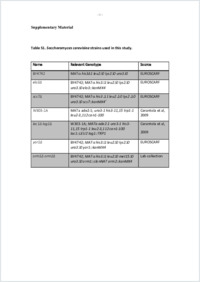Following the flux of long-chain bases through the sphingolipid pathway in vivo using mass spectrometry
- Martínez-Montañés, Fernando University of Fribourg Department of Biology, Switzerland
- Schneiter, Roger University of Fribourg Department of Biology, Switzerland
-
01.05.2016
Published in:
- Journal of Lipid Research. - 2016, vol. 57, no. 5, p. 906–915
English
Sphingolipids are essential components of the plasma membrane. Their synthesis is tightly controlled by regulatory proteins, which impinge on the rate-limiting step of the pathway, the condensation of serine and palmitoyl-CoA to long-chain base (LCB). The subsequent conversion of LCB to ceramide by ceramide synthase (CerS) is also tightly regulated, because both the accumulation of LCB as well as an excess of ceramide is toxic. Here we describe an in vivo assay to monitor the flux of LCB through the sphingolipid pathway in yeast. Cells are provided with nonnatural odd-chain sphingosine analogs, C17-dihydrosphingosine or C17-phytosphingosine (PHS), and their incorporation into ceramide and more complex sphingolipids is monitored by mass spectrometry. Incorporation of C17-PHS is time and concentration dependent, is inhibited by fumonisin B1, an inhibitor of CerS, and greatly reduced in double mutant cells lacking components of the CerS, Lac1 and Lag1. The resulting C17-ceramides are further metabolized to more complex sphingolipids, inositol phosphorylceramide and mannosylinositol phosphorylceramide), indicating that the tracer can be used to decipher the regulation of later steps of the pathway. In support of this notion, we show that mutants lacking the Orm proteins, regulators of the rate-limiting step of the pathway, display increased steady-state levels of these intermediates without affecting their rate of synthesis.
- Faculty
- Faculté des sciences et de médecine
- Department
- Département de Biologie
- Language
-
- English
- Classification
- Biological sciences
- License
-
License undefined
- Identifiers
-
- RERO DOC 261066
- DOI 10.1194/jlr.D066472
- Persistent URL
- https://folia.unifr.ch/unifr/documents/305042
Other files
Statistics
Document views: 97
File downloads:
- pdf: 188
- Supplementary material: 114

